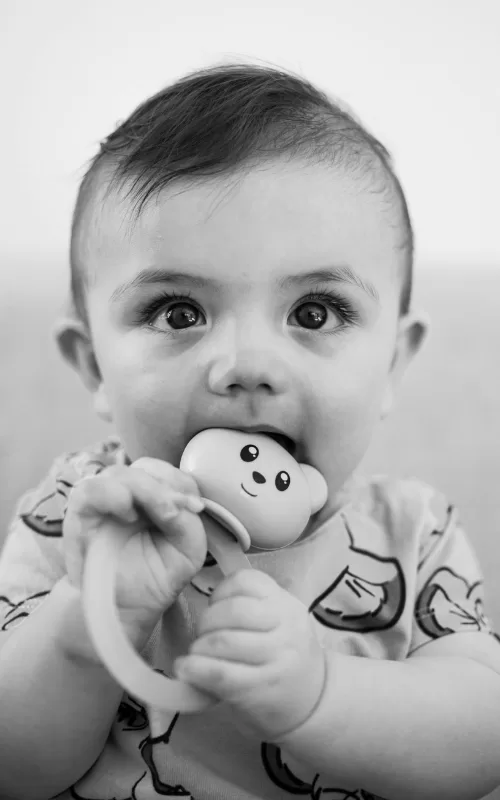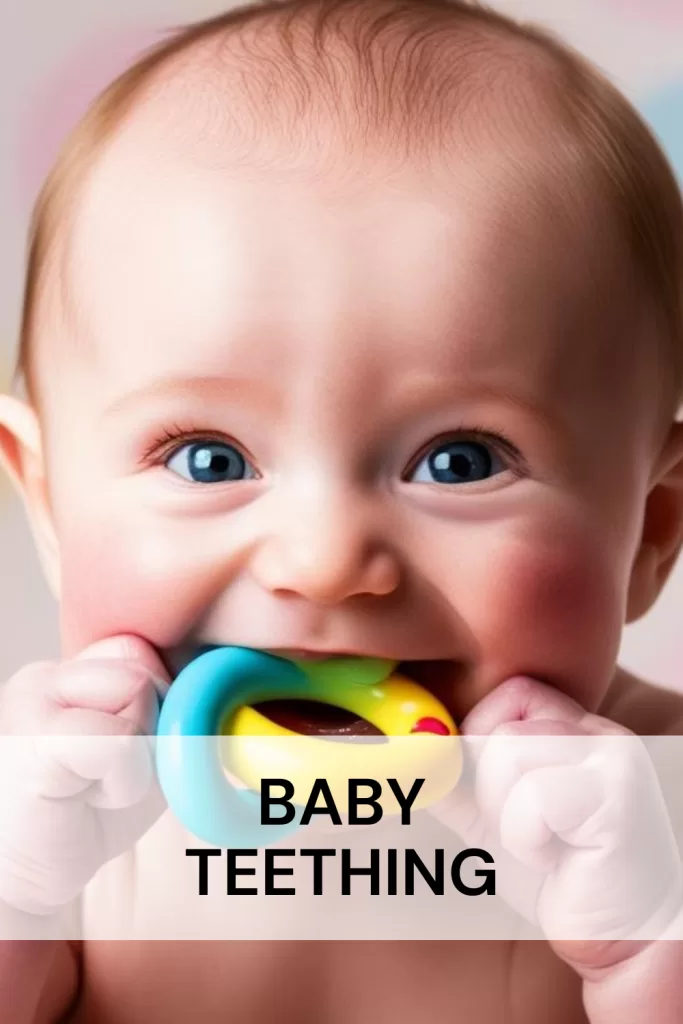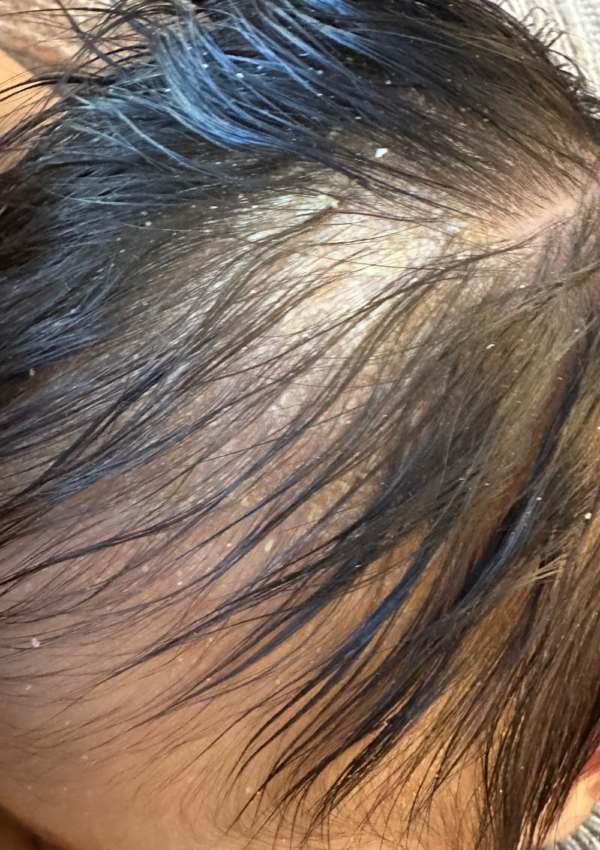Baby teething can cause many tears – on everybody. If your baby is going through teething, this post is for you.
DISCLOSURE This post may contain affiliate links, meaning if you decide to make a purchase via my links, I will earn a commission at no extra cost to you. As an Amazon Associate I earn from qualifying purchases. Thank you for your support.
Disclaimer: The information provided in this blog post is for educational purposes only and should not be used as a substitute for professional medical advice, diagnosis, or treatment. Always seek the guidance of your pediatrician or qualified healthcare provider with any questions you may have regarding your child’s health. If you think your child may have a medical emergency, call your doctor or emergency services immediately. Read our full Medical Disclaimer here.
Baby teething marks an exciting yet challenging milestone in babies’ development. As a registered nurse, I frequently counsel parents through this phase, and I understand the mix of emotions it brings. Today, I’ll share essential information about teething and practical strategies to help both you and your baby navigate this journey.
You might also like to read our post about Natural Fever Reducer for Kids: Safe Comfort for Unwell Little Ones and Feeding Bottle for Baby: Which One is the Best?
Baby Teething: When Teething Begins
According to the American Academy of Pediatrics, most babies start teething between 4 and 7 months of age, though some may begin earlier or later. Every baby follows their own timeline, and early or late teething doesn’t indicate any developmental issues. The complete set of primary teeth typically emerges by age three.

Recognizing Teething Signs
Your baby communicates their discomfort through various signals. Common teething signs include:
- Your baby drools more than usual. You’ll notice wet shirts and bibs throughout the day. Increased drooling often starts several weeks before the first tooth appears.
- Your baby chews on everything within reach. This natural response helps relieve the pressure they feel beneath their gums. They instinctively seek objects to gnaw on, turning everyday items into potential teething tools.
- Your baby feels irritable and cries more frequently. The persistent discomfort disrupts their usual mood and sleep patterns. They might resist feeding and need extra comfort during this time.
- Your baby’s gums look swollen and red. You might spot the white edge of an emerging tooth beneath the gum line. The area may appear tender and feel warm to the touch.
Baby Teething: Managing Teething Discomfort
Parents wield several effective tools to ease their baby’s teething pain.
- Cold temperatures help numb sore gums and reduce inflammation. Place clean teething rings like the Frida Baby Teething Relief Not-Too-Cold-to-Hold Baby Teether in the refrigerator (not the freezer) before giving them to your baby. The cool sensation provides welcome relief.
- Gentle gum massage works wonders for many babies. Wash your hands thoroughly, then use your clean finger to apply light pressure to your baby’s gums. This counter-pressure helps alleviate the discomfort of emerging teeth. Mommy’s Bliss Organic Little Gums Soothing Massage Gel Day and Night Combo is our favorite teething gel that has organic and safe ingredients for baby.
- Keep clean burp cloths handy to manage excessive drool. Moisture against the skin can cause irritation, so frequently wiping your baby’s chin and changing wet clothes prevents skin rashes.

Baby Teething: Safe Teething Products
When selecting teething products, safety comes first. Choose teething rings made from solid rubber rather than liquid-filled varieties. Solid rings can’t leak or break, eliminating potential hazards.
Silicone teething necklaces designed for parents to wear while holding their babies provide a safe chewing surface. However, never leave these necklaces with your baby unattended, as they pose a strangulation risk.
Avoid amber teething necklaces. Despite their popularity, no scientific evidence supports their effectiveness, and they create unnecessary choking hazards.
When to Contact Your Healthcare Provider
While teething causes discomfort, it shouldn’t make your baby sick. Contact your pediatrician if your baby develops:
- A fever over 100.4°F (38°C)
- Severe diarrhea
- Widespread rash
- Significant sleep disruption
- Is refusing to eat or drink
These symptoms might indicate issues unrelated to teething that require medical attention.
Supporting Your Baby’s Oral Health
Start good oral hygiene habits before the first tooth appears. Wipe your baby’s gums with a clean, damp washcloth after feedings. Once teeth emerge, use an infant toothbrush like the Dr. Brown’s Infant-to-Toddler Toothbrush, Giraffe with soft bristles and water twice daily. Avoid fluoride toothpaste until your child can reliably spit it out.
Schedule your baby’s first dental visit within six months of their first tooth appearing or by their first birthday, whichever comes first. Early dental care establishes a foundation for lifelong oral health.

The Emotional Journey
Remember that teething affects the whole family. Your baby might need extra patience and comfort during this time. Try to maintain consistent bedtime routines while allowing flexibility for particularly challenging days. Share caregiving responsibilities with your partner or support system to prevent exhaustion.
Conclusion
This post was all about baby teething. Teething represents one of many developmental phases your child will experience. Each tooth’s arrival brings you closer to your baby’s first foods, bright smiles, and eventual ability to communicate verbally. While challenging, this period strengthens the bond between parent and child through increased comfort and care.
Stay positive and remember that teething, though sometimes difficult, remains temporary. Your consistent support helps your baby develop resilience and trust in your care. Before long, you’ll celebrate a full set of primary teeth and the adorable smiles they create.







Leave a Reply